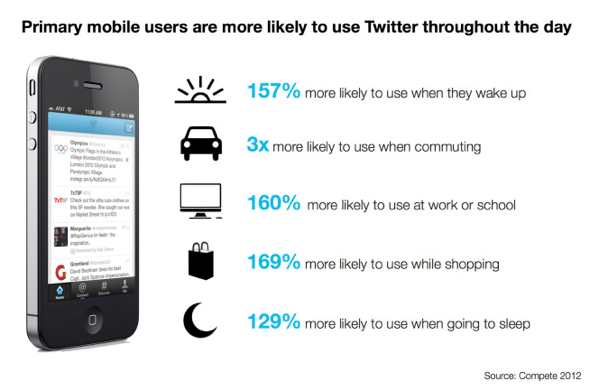 In a recent report called “2013 Mobile Future in Focus” comScore released their outlook for mobile trends. The report shows the U.S. mobile and connected device landscape in 2012, which is meant to the set the stage for the international expansion of the mobile revolution. It offers insights into mobile media consumption, mobile networks, platforms, as well as OEMs. It also includes key mobile market insights from the United Kingdom, France, Germany, Spain, Italy, Canada, and Japan.
In a recent report called “2013 Mobile Future in Focus” comScore released their outlook for mobile trends. The report shows the U.S. mobile and connected device landscape in 2012, which is meant to the set the stage for the international expansion of the mobile revolution. It offers insights into mobile media consumption, mobile networks, platforms, as well as OEMs. It also includes key mobile market insights from the United Kingdom, France, Germany, Spain, Italy, Canada, and Japan.
The report illustrates the following trends for the mobile year 2013…
Multi-mobile use shapes the “Brave New Digital World”
The U.S. is surpassing 125 million U.S. consumers and tablets in mobile consumption. More than 50 million own smart mobile devices which make consumers being always connected. Americans spend more than one out of every three minutes online on mobiles. Does this show the end of the desktop?
Smartphones surpass 50% penetration and start ‘Late Majority’ of adopters
In 2012 the U.S. smartphone market became the year of mobile by finally surpassed 50% market penetration. It enters the “late majority” stage of the technology adoption curve. Smartphone subscribers increased 29% from a year ago and 99% from two years ago. 72% of all newly-bought devices were smartphones.

Android and iOS Control U.S. Smartphone Market
Google’s Android OS and Apple’s iOS dominate the U.S. smartphone landscape with almost 90% of the market today. The well-developed app ecosystems makes it even more difficult for competing platforms to narrow the gap.
Samsung makes splash in smartphone OEM market
Samsung strongly competes more and more with Apple that is still the leading smartphone OEM. The year-over-year increase of more than 100% from Samsung and a two-year increase of more than 400% shows how much they are challenging Apple. The gap between the two competitors is steadily narrowing though.
High-Speed mobile connectivity speeds up mobile content consumption
Wider availability of high-speed internet access has increased the average user’s media consumption experience. Default Wi-Fi accessibility for smartphones and tablets like in coffee shops contributes to the new workplace and a better browsing experience for users. But also the availability of better networks speed (4G and LTE technology) will leverage the mobile content adoption.

Spot On!
The report shows that 2013 was kind of the “year of mobile”. With the rise of smartphone adoption to an over 50% penetration but also tablets becoming more prevalent, it seems that the world is moving more and more away from desktop internet usage. Mobile devices make up the digital media consumption of consumers these days. Obviously, marketers and media companies need to adapt their businesses to the emerging mobile multi-platform world but should also see the opportunity of mobile car technology (Google Glass Project), Augmented Reality (IKEA), QR codes (Adidas) or “mobile storytelling” (AUDI).
So now up to you. What has changed in your mobile adaption from last year? What are you missing in terms of mobile marketing development? And what would you be open for when marketers address you with mobile content?






 Consumers are multitasking and using other electronic devices like phones or tablets when watching television. This is the conclusion of a recent third annual Video Over Internet
Consumers are multitasking and using other electronic devices like phones or tablets when watching television. This is the conclusion of a recent third annual Video Over Internet  These are the main findings of the study….
These are the main findings of the study….
 In a recent report called
In a recent report called 




